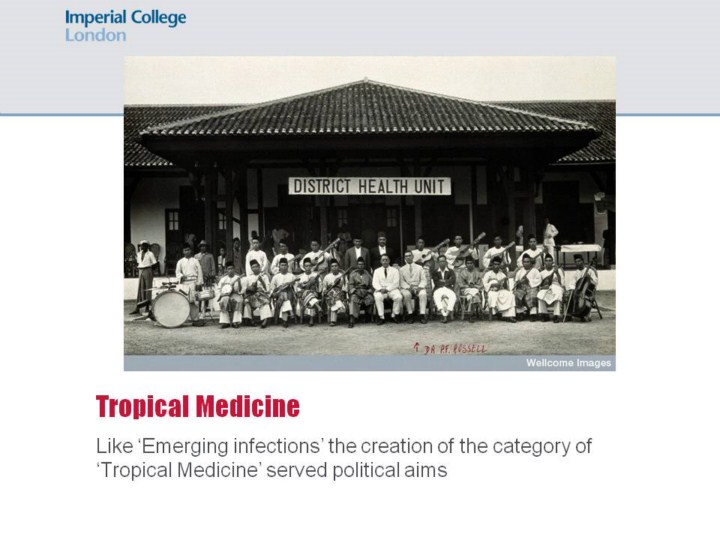 |
We
might make the comparison between the creation of the ‘Emerging infectious
disease’ category at the end of the 20th century and the creation
of the category of ‘Tropical Medicine’ at the beginning of the 20th
Century. During the heyday of the British Empire, Africa was known as ‘The
White Man’s Grave’ for good reason. Hence at the turn of the century a new
medical speciality ‘Tropical Medicine’ was created. Unlike medical
specialities linked by some medical taxonomy such as ‘cancer medicine’ or
‘paediatrics’ , Tropical Medicine brought under its sphere of influence a
range of otherwise unconnected diseases – the purpose of the creation of the
new category was to serve the geo-political aims of the British Empire. We
might also think of ‘Emerging Infectious Diseases’ as a similarly
constructed category of disparate and unconnected infections – some relating
to industrial food production – ‘mad cow disease’ (vCJD), others related to
changes in human behaviour such as injecting drugs (such as hepatitis C),
others still related to the misuse of technology, for example leading to
antibiotic resistance; or to environmental changes – such as Lyme Disease.
If Tropical Medicine served the political purposes of the colonial powers,
what political purposes might creating the category of ‘Emerging Infectious
Diseases’ be said to serve? Firstly, by aggregating diverse health concerns
and issues such as AIDS and MRSA, the cumulative effect is heightened. There
is evidence that the authors of the EID category’s real concern was with the
dismantling of the US public health infrastructure (in the light of
triumphalism about infectious disease) and they wanted to refocus the minds
of the politicians and the public in order to gain funding for public
health. Another concern was the threat of diseases being imported into the
US, either in the bodies of immigrants or as a result of increased global
travel. The net result was tightened immigration controls. |
